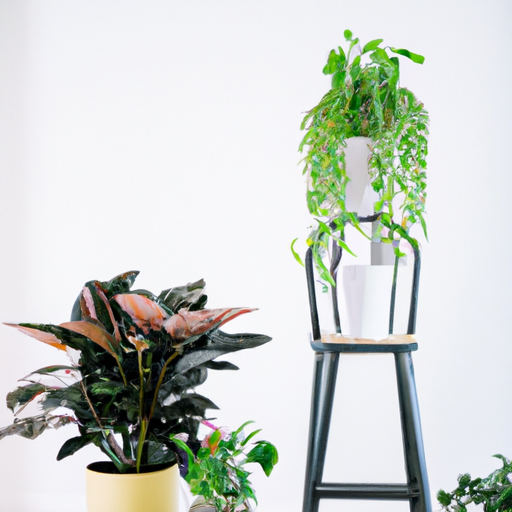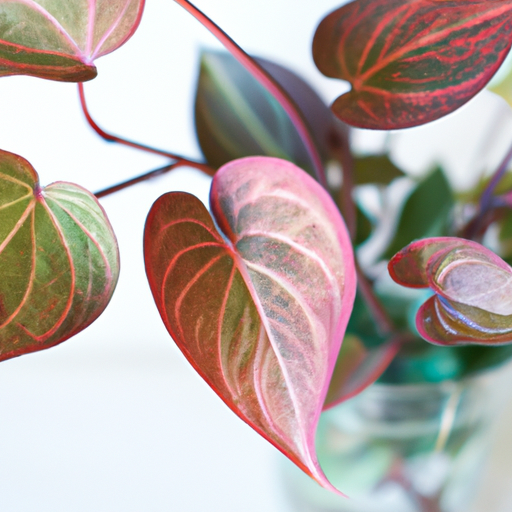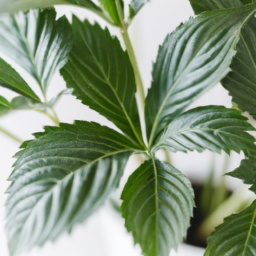
Are you looking to add a touch of freshness and beauty to your living space? Look no further than plant aesthetics! Elevate your space with greenery and transform it into a vibrant oasis that not only pleases the eye but also promotes a sense of tranquility and well-being. Plants have been used for centuries to enhance the visual appeal of indoor and outdoor spaces, and their popularity continues to grow. In this blog post, we will explore the world of plant aesthetics, discussing the numerous benefits of incorporating greenery into your surroundings and providing tips on how to choose the perfect plants for your space. So, let’s dive in and discover how you can create a stunning and inviting environment with the power of plants!
The Benefits of Incorporating Plants in Interior Design
Introduction
Incorporating plants into interior design has gained popularity in recent years, and for good reason. Not only do plants add a touch of natural beauty to any space, but they also offer numerous benefits that can enhance our overall well-being. From improving air quality to reducing stress levels, plants have the power to transform our living environments. In this guide, we will explore the various benefits of incorporating plants in interior design and provide you with step-by-step tips on how to elevate your space with greenery.
Improved Air Quality
One of the most significant benefits of incorporating plants into your interior design is the improved air quality they provide. Plants naturally absorb carbon dioxide and release oxygen through the process of photosynthesis. This means that by having plants in your home or office, you are increasing the oxygen levels and reducing the carbon dioxide concentration, resulting in cleaner and fresher air to breathe.
Additionally, plants act as natural air purifiers by filtering out harmful toxins and pollutants present in the air. Studies have shown that certain plants, such as the Snake Plant and Peace Lily, are particularly effective at removing common indoor pollutants like formaldehyde, benzene, and trichloroethylene. By reducing the levels of these toxins, plants can help improve your overall health and well-being.
Reduced Stress and Improved Mental Health
Incorporating plants into your interior design can have a significant impact on your mental health and well-being. Research has shown that being in the presence of plants can help reduce stress levels and promote relaxation. The color green, which is abundant in plants, has a calming effect on our minds and can evoke feelings of tranquility and harmony.
Moreover, caring for plants can provide a sense of purpose and fulfillment, which can boost our mood and overall happiness. The act of nurturing and watching plants grow can be incredibly rewarding and can serve as a form of therapy. Whether it’s tending to a small succulent garden or cultivating a collection of indoor trees, the process of caring for plants can bring a sense of peace and tranquility to your space.
Enhanced Productivity and Concentration
If you’re looking to improve your productivity and concentration, incorporating plants into your interior design can be a game-changer. Studies have shown that having plants in the workplace or study environment can increase focus and cognitive performance. The presence of greenery can help reduce mental fatigue and improve attention span, leading to enhanced productivity and efficiency.
Furthermore, plants can help create a more pleasant and inviting atmosphere, making your workspace or study area more enjoyable to be in. This can have a positive impact on your overall mood and motivation, ultimately leading to better work or study outcomes. So, whether you’re working from home or studying for an important exam, consider adding some plants to your space to boost your productivity and concentration levels.
Conclusion
Incorporating plants into your interior design goes beyond mere aesthetics. The benefits of having greenery in your living or working space are numerous and can significantly improve your overall well-being. From improved air quality to reduced stress levels and enhanced productivity, plants have the power to transform your space and elevate your living experience. So, don’t hesitate to bring the beauty of nature indoors and start reaping the benefits of plant aesthetics today.
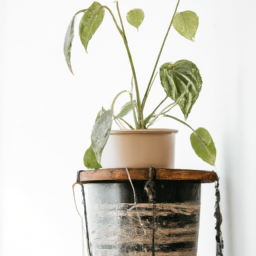
Choosing the Right Plants for Different Spaces and Aesthetics
Introduction
When it comes to elevating your space with greenery, choosing the right plants is crucial. Plants not only add a touch of nature but also enhance the aesthetics of any environment. Whether you have a small apartment, a spacious office, or a cozy garden, selecting the perfect plants can transform your space into a tranquil and inviting oasis. In this guide, we will explore the art of plant aesthetics and provide you with a step-by-step approach to selecting the right plants for different spaces and aesthetics.
Understanding Your Space
Before diving into the world of plants, it’s essential to understand your space. Each environment has its unique characteristics, including lighting conditions, temperature, humidity levels, and available space. Take a moment to assess your area and consider the following factors:
1. Lighting Conditions
Plants require varying levels of light to thrive. Some thrive in bright, direct sunlight, while others prefer indirect or even low light conditions. Determine the amount of natural light your space receives throughout the day. If you have a room with large windows that allow plenty of sunlight, you can opt for plants that love bright light, such as succulents, cacti, or tropical plants. On the other hand, if your space lacks natural light, you can choose plants that can tolerate low light conditions, such as snake plants, pothos, or ZZ plants.
2. Temperature and Humidity
Different plants have different temperature and humidity requirements. Some plants thrive in warm and humid conditions, while others prefer cooler and drier environments. Consider the average temperature and humidity levels of your space. If you live in a region with a tropical climate or have a well-heated room, you can opt for plants like ferns, orchids, or peace lilies that enjoy higher humidity levels. For cooler spaces or those with lower humidity, plants like succulents, cacti, or air plants are excellent choices.
3. Available Space
The available space in your environment will also influence your plant choices. If you have limited space, consider plants that can thrive in smaller pots or hanging planters, such as spider plants, pothos, or small herb plants. On the other hand, if you have more room to spare, you can go for larger plants like fiddle leaf figs, monstera deliciosas, or palm trees to create a statement piece in your space.
Matching Plants with Aesthetics
Now that you have a good understanding of your space, it’s time to match the plants with your desired aesthetics. The plants you choose should complement the overall style and ambiance you want to achieve. Here are a few popular aesthetics and suitable plant choices for each:
1. Minimalist Aesthetic
If you prefer a clean and clutter-free space, a minimalist aesthetic might be the perfect fit for you. Opt for plants with sleek and simple foliage, such as snake plants, ZZ plants, or peace lilies. These plants have a timeless elegance and can thrive in various lighting conditions, making them ideal for minimalistic spaces.
2. Bohemian Aesthetic
For those who love a more eclectic and free-spirited vibe, the bohemian aesthetic is an excellent choice. Embrace lush and trailing plants like pothos, spider plants, or string of pearls. These plants will add a touch of whimsy and create a relaxed and inviting atmosphere in your space.
3. Modern Industrial Aesthetic
If you’re drawn to the sleek and edgy look of modern industrial design, consider plants with architectural shapes and bold foliage. Plants like fiddle leaf figs, monstera deliciosas, or snake plants can be the perfect addition to your space. Their large leaves and striking presence will add a touch of drama and complement the industrial aesthetic.
Plant Care and Maintenance
Once you have chosen the right plants for your space and aesthetics, it’s crucial to provide them with proper care and maintenance. Here are a few essential tips to keep your plants healthy and thriving:
1. Watering
Each plant has different watering requirements. Some plants prefer to dry out between waterings, while others like consistently moist soil. Research the specific needs of your chosen plants and create a watering schedule accordingly. Remember to check the moisture level of the soil before watering to avoid overwatering or underwatering.
2. Fertilizing
Plants need nutrients to grow and flourish. Consider using a balanced plant fertilizer to provide them with essential nutrients. Follow the instructions on the fertilizer packaging and fertilize your plants regularly during the growing season. Be cautious not to over-fertilize, as it can lead to nutrient burn and harm your plants.
3. Pruning and Grooming
Regular pruning and grooming are essential to maintain the aesthetics of your plants. Remove any dead or yellowing leaves, trim overgrown stems, and shape the plants as desired. This will not only keep your plants looking neat but also promote healthy growth.
Conclusion
Choosing the right plants for different spaces and aesthetics is a delightful journey that allows you to express your creativity and enhance your environment. By understanding your space, matching plants with aesthetics, and providing proper care, you can create a green oasis that elevates your space and brings joy and tranquility to your life. So go ahead, explore the world of plant aesthetics, and let your imagination flourish with greenery.
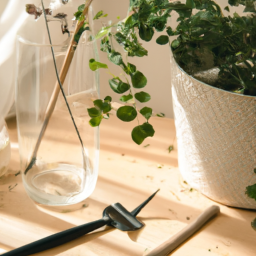
3. Creative Ways to Display and Arrange Plants for a Stylish and Inviting Atmosphere
Introduction
Welcome to the world of plant aesthetics, where greenery takes center stage in creating a stylish and inviting atmosphere for your space. Whether you have a large garden, a cozy balcony, or a tiny apartment, there are endless creative ways to display and arrange plants that will elevate the overall aesthetic and bring life into your surroundings. In this guide, we will explore some innovative ideas to help you transform your space into a botanical paradise.
Creating Vertical Gardens
One of the most exciting trends in plant aesthetics is the concept of vertical gardens. These gardens not only maximize space but also add a unique visual appeal to any area. To create a vertical garden, start by choosing a suitable wall or fence where you can install planters or hanging pots. Consider using a variety of plant species with different colors, textures, and sizes to create an eye-catching display. You can also experiment with arranging the plants in different patterns or shapes to add a touch of creativity.
Another creative way to display plants vertically is by using a living wall system. These systems consist of modular panels that can be easily attached to any wall surface. Simply insert your favorite plants into the panels, and watch as they grow and cascade down, creating a stunning living artwork. Vertical gardens are not only aesthetically pleasing but also help purify the air and improve overall indoor air quality.
For those with limited space, vertical gardens are a game-changer. They allow you to enjoy the beauty of plants without compromising on floor space. Whether you choose to create a small herb garden in your kitchen or a lush green wall in your living room, vertical gardens are sure to add a stylish and inviting atmosphere to your space.
Incorporating Plants into Furniture
If you’re looking for a truly unique and innovative way to display plants, why not consider incorporating them into your furniture? This trend, known as “living furniture,” combines functionality with aesthetics, allowing you to bring nature indoors in a stylish and unexpected way. Imagine a coffee table with a built-in planter in the center, or a bookshelf with integrated plant pots on the shelves.
To create living furniture, you can either purchase ready-made pieces or get creative and DIY your own. For example, you can repurpose an old wooden ladder by adding plant pots to each step, creating a vertical plant display. Another idea is to transform a vintage suitcase into a plant stand by lining it with plastic and filling it with soil and plants. The possibilities are endless, and the result is a truly unique and personalized piece of furniture that will become a conversation starter.
Incorporating plants into furniture not only adds a touch of nature to your space but also brings a sense of harmony and tranquility. It blurs the boundaries between indoor and outdoor, creating a seamless connection between the two.
Creating Terrariums and Miniature Gardens
If you’re a fan of small-scale gardening, creating terrariums and miniature gardens is the perfect way to showcase your plant collection. Terrariums are enclosed glass containers that create a mini ecosystem for plants to thrive. They come in various shapes and sizes, allowing you to create your own miniature world. Start by layering the bottom of the container with rocks or pebbles for drainage, followed by activated charcoal to absorb excess moisture. Then, add a layer of potting soil and carefully arrange your chosen plants. Finish off with decorative elements like small figurines or colorful stones.
Miniature gardens, on the other hand, are outdoor spaces designed on a smaller scale. They can be created in a corner of your garden, on a balcony, or even indoors. Begin by selecting a suitable container or planter, such as a shallow tray or a wooden box. Fill it with a well-draining soil mix and choose plants that are proportionate to the size of the container. You can add small pathways, miniature furniture, and tiny accessories to create a whimsical and enchanting garden.
Both terrariums and miniature gardens offer a creative way to display and arrange plants, allowing you to create a captivating and personalized green oasis. They are low-maintenance and can be easily customized to suit your style and preferences.
Conclusion
With these creative ways to display and arrange plants, you can transform any space into a stylish and inviting oasis. Whether you choose to create vertical gardens, incorporate plants into furniture, or design terrariums and miniature gardens, the possibilities are endless. Remember to experiment with different plant species, colors, and textures to create a visually appealing and harmonious display. So go ahead, let your creativity bloom, and elevate your space with the beauty of greenery.
Let’s recap
Are you looking to add a touch of elegance and tranquility to your living space? Look no further than the power of plants! Greenery not only enhances the aesthetics of any room but also brings a sense of calm and serenity. Whether you have a spacious garden or a tiny apartment, incorporating plants into your surroundings can transform your space into a lush oasis.
Plants have a remarkable ability to elevate the ambiance of any room. Their vibrant colors and unique shapes create a visually appealing focal point that can breathe life into even the dullest corners. From small succulents to towering palm trees, there is a plant for every style and preference. Not only do they add beauty to your space, but plants also have numerous health benefits. They purify the air by absorbing carbon dioxide and releasing oxygen, making your environment fresher and cleaner. Additionally, studies have shown that being surrounded by greenery can reduce stress and improve overall well-being. So why not bring the outdoors in and enjoy the many benefits of plant aesthetics?
Your Questions Answered. Comprehensive FAQ:
Q1: How can I use plants to elevate the aesthetics of my space?
A1: Incorporating plants into your space is a fantastic way to enhance its aesthetics. You can start by strategically placing potted plants or hanging planters in various areas, such as on shelves, windowsills, or even suspended from the ceiling. Additionally, you can create a stunning visual impact by arranging a collection of plants in different sizes and shapes, creating a vibrant and dynamic display. Remember to choose plants that thrive in the lighting and temperature conditions of your space to ensure they stay healthy and beautiful.
Q2: What are some low-maintenance plant options for beginners?
A2: If you’re new to plant care or have a busy lifestyle, there are plenty of low-maintenance plant options that can still bring beauty to your space. Some popular choices include snake plants, pothos, ZZ plants, and succulents. These plants generally require minimal watering and can tolerate a variety of lighting conditions. They are great for beginners as they are more forgiving if you forget to water them occasionally.
Q3: How can I incorporate plants into small spaces?
A3: Even if you have limited space, you can still incorporate plants to elevate its aesthetics. Consider using vertical gardening techniques, such as installing wall-mounted planters or hanging plants from the ceiling. You can also opt for compact plants like air plants or small ferns that can fit on a windowsill or a tiny shelf. Additionally, utilizing corner spaces with tall plants or placing a few plants strategically on a side table can add a touch of greenery without taking up much room.
Q4: What are some indoor plants that can help purify the air?
A4: Indoor plants not only enhance aesthetics but also contribute to better air quality. Some excellent air-purifying plants include the peace lily, spider plant, snake plant, and aloe vera. These plants have the ability to remove harmful toxins from the air, making your space not only visually appealing but also healthier to breathe in.
Q5: How can I care for my plants to ensure they stay healthy and vibrant?
A5: To keep your plants healthy and vibrant, it’s important to provide them with proper care. This includes watering them according to their specific needs, ensuring they receive adequate sunlight or shade depending on their requirements, and regularly dusting their leaves to keep them clean. Additionally, be mindful of pests and diseases, and take necessary steps to prevent or treat them. Lastly, don’t forget to occasionally fertilize your plants to provide them with essential nutrients for optimal growth.
Emily Bloomfield is an interior designer and horticulturist specializing in incorporating indoor plants into interior spaces. With a background in both design and plant science, Emily offers a unique perspective on creating harmonious living environments through the synergy of greenery and aesthetics. Her creative ideas and innovative solutions make her a sought-after authority in the field.

